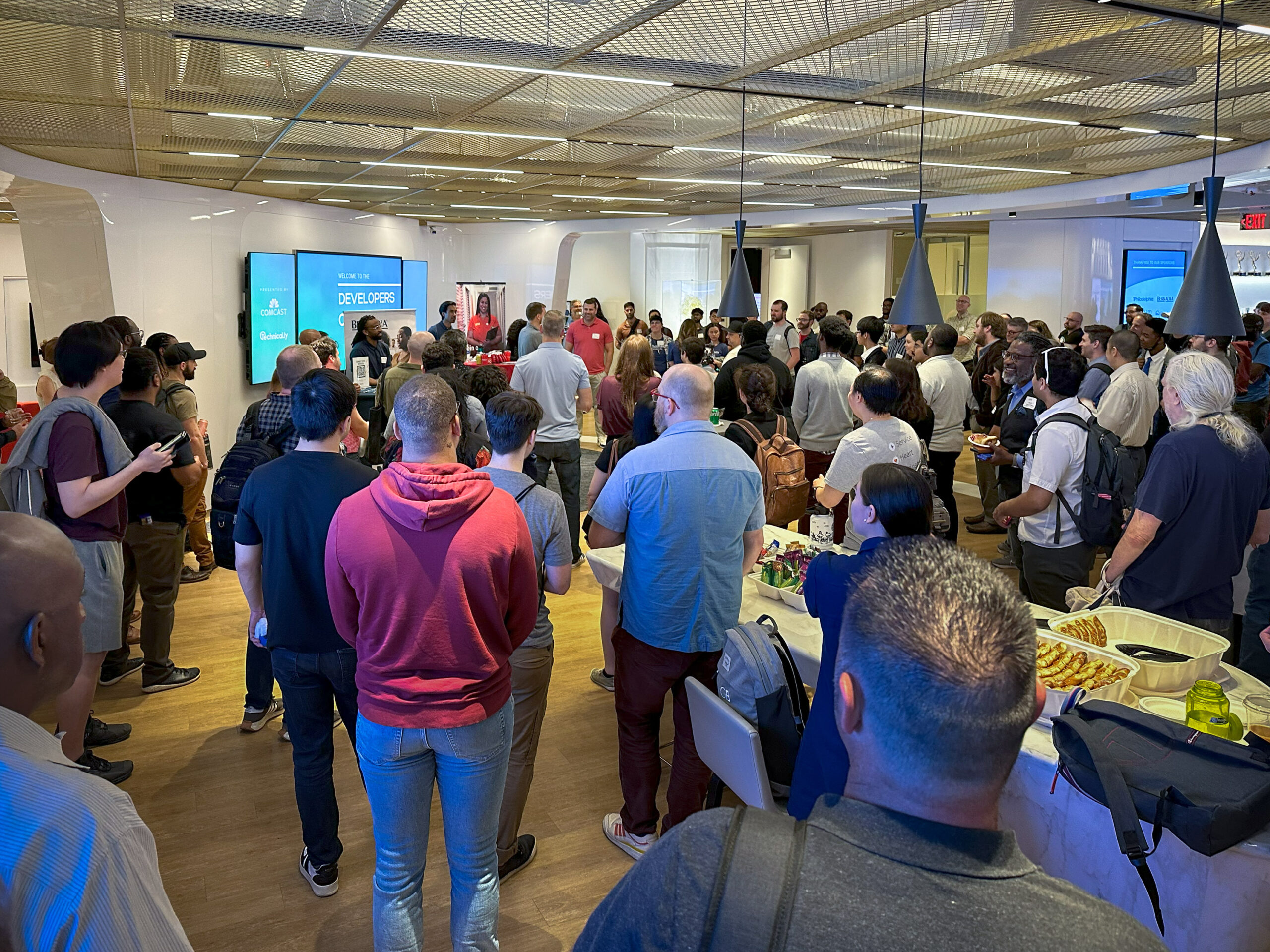- High-tech roles like software developers have significant multiplier effects, with each job creating at least two additional local jobs through spending.
- But government workforce strategies are often shaped around traditional job classifications, like individual earning potential or educational requirements. This neglects the potential of high-tech positions, which, while “tradeable,” can drive greater local economic growth.
- To maximize this growth, regional workforce agencies should consider more focus on high-multiplier jobs, instead of continuing to invest in broad strategies that spread resources too thin.
→ Read on for details and join Chris Wink’s weekly newsletter for more
Before the pandemic, software startups renting downtown offices weren’t just good for landlords. High-tech workers are little local economic engines.
By virtue of their spending, each new hire helps create other local jobs, like baristas, carpenters and surgeons — a phenomenon economists call the multiplier effect. For high-paying, highly-productive jobs like software developers, the average “employment multiplier” is 2.5, according to a meta-analysis associated with the London School of Economics.
Across the broad innovation economy, including a range of role types in everything from software to life sciences to robotics, the study estimates tech jobs have an average multiplier of nearly 2.
So a startup with 250 employees in its decked out offices in 2019 helped create another 500 local jobs. That’s from coffee breaks and team lunches, and because those employees pay rent and go to the theater. This impressive effect comes from high wages and high leverage — tech work makes products and processes that can be reused, sometimes infinitely.
In contrast, purely local jobs like those baristas, and public sector roles, have lower multiplier effects—0.9 and 0.25, respectively, according to the same LSE analysis. These jobs still matter, but they don’t create the same economic ripple.
Despite this disparity, many workforce strategies don’t reflect these differences.
Policymakers talk up tech jobs, but workforce development programs often lack a focused approach. Why? And is it too late to change?
Cluttered workforce strategies that haven’t been updated
Many state and local government agencies responsible for their regional workforce competitiveness release lists of priority jobs to guide curriculum, training programs and resources. Knowing some jobs have such outsized economic impact, one might expect them to dominate these lists. They don’t.
The Virginia Economic Development Partnership maintains a dashboard of more than 350 “in-demand occupations,” which is almost half of all the jobs the agency tracks. Their list includes brickmasons, naval architects and boilermakers — all of which are projected to decline in the next five years.
The Pennsylvania Department of Labor and Industry releases an annual list of “high-priority occupations,” which also spans hundreds of roles. The state divvies up workforce responsibilities to regional authorities, which refine their own lists.
The local Philadelphia Works list, updated last month, seems no less cluttered with 170 occupations. Last year’s list included payroll administrators, despite expectations for fewer people to be in the role in coming years. The latest list from Pittsburgh’s Partner4Work included solar energy technicians and environmental engineers, signaling that region’s interest toward green jobs, but also includes declining roles.
Forward-looking lists of priority jobs from the workforce agencies in places as far-flung as Delaware and Alabama also puzzlingly include local roles that are projected to decline.
All do include jobs with high multiplier effects, like software developers, and most have other in-demand technical roles that require in-person work, like CNC machine tool programmers and phlebotomists. But too many places appear to make no substantive difference between jobs of the future, and jobs that may have been part of local workforce development strategies for decades.
Here Ohio fares better. That state combines workforce and education into a single agency, informing its list of eight “priority career clusters,” including early childhood education; healthcare roles and research and technology.” It still has its own dashboard with a lengthy list of “top jobs,” but they are in part related to data-backed job demand.
If not all jobs are equal, why are the strategies?
If some jobs have greater economic impact, why aren’t workforce strategies more targeted?
One reason is the world has changed but workforce strategies haven’t. After World War II, most state and local governments adopted workforce planning that categorized jobs by their earning potential, or whether they required a college degree, or whether it was in manufacturing or not.
In the early 2000s, economist Alan Blinder’s exploration of “offshoring” raised another dimension: how easily can the job be moved? Binder popularized the idea of dividing jobs between “tradable” ones that sell their services elsewhere (like software developers) and “non-tradable” (like baristas or carpenters). Tradable jobs are often more valuable because they create stuff for the most potential customers, but also face international competition.
More focus on high-multiplier jobs could transform regional economies.
Technology and globalization make this easier. In 2022, Technical.ly produced a four-part series on how the pandemic kicked off a wave of small and mid-sized tech firms hiring overseas. Analysts project that to continue: The number of software developers in the Asia-Pacific region and Latin America is expected to rise much faster than in North America, according to Evans Data (17% and 21% growth by 2029, respectively, compared to 13%). By 2027, more Github users are projected to live in India than in the United States, heretofore the world leader.
That might worry workforce leaders: Why train workers for jobs that seem so easy to move elsewhere, when bank tellers and brick masons will still be here?
Economist Enrico Moretti argued in his 2012 book “The New Geography of Jobs” that innovation jobs not only have those multiplier effects, they’re also sticky. More software developers, geneticists and roboticists both attract more of their peers and boost the wages of local brick masons.
Innovation jobs can be oversold. In 2017, policymakers used multiplier effects to justify billions of Wisconsin taxpayer dollars to subsidize a Foxconn factory that has since been dramatically scaled back. A 2019 paper by the Upjohn Institute argued that these effects are often overestimated, especially in places without established tech clusters.
But for regions that do have density in high-tech jobs, more focus on high-multiplier jobs could transform regional economies, but it will take a more targeted approach.
What can be done?
Most state and local governments have a workforce development plan to address the perceived gaps that develop between employer need and worker skills. Monies are allocated to collect and analyze data on job demands, and fund training programs. These in-demand lists are intended to guide workforce development efforts to have the biggest impact on residents and regional economies.
How does a job end up on a workforce agency’s high-priority list? Most cite certain thresholds of demand and salary. But many accept suggestions from employers and other stakeholders too. That’s where the bloat begins.
Workforce development strategies need to be choosy. Multiplier effects are just one tool used in economic development that has workforce uses too. Rather than hundreds, regions and states should have a few dozen priority roles and focus. Tennessee’s labor and workforce department says its in-demand occupations list only includes roles with positive projected job growth.
Battle efforts to do otherwise. If that’s too hard, look at Colorado, where its annual talent report highlights priority sectors, and the most high-value occupations needed.
Though its enormous scale risks its own inefficiencies, the EDA Tech Hubs program funded by the bipartisan CHIPS and Science Act could serve as inspiration. The first dozen regional strategies it invested in were highly specialized, and all focused on innovation. In western Pennsylvania, too, the federally-funded New Economy Collaborative is targeting key roles in robotics and advanced manufacturing — which, per LSE, has its own strong multiplier effect of 1.6.
If high-tech jobs matter so much, you might also wonder how much the entrepreneurs who start companies count. A 2016 paper calculated the historical multiplier effect of entrepreneurs and found that founders’ economic effects, like workers, are highly dependent on the type of work they do.
Many regional economic development agencies are adding entrepreneurship investment to their strategies, but at least for now, far fewer tech startups are popping up in downtowns. Another reason to care more about the people than the companies.










